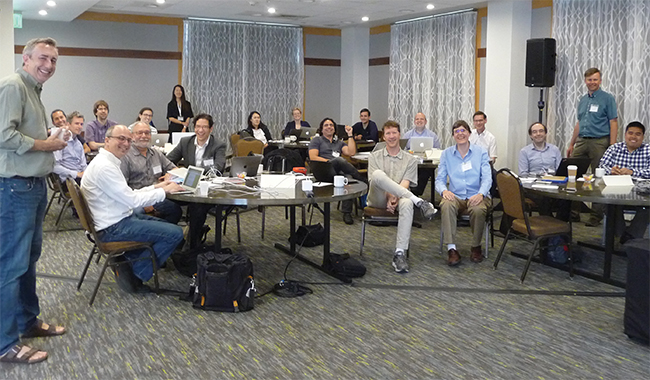涩里番: Guidelines for reporting
complex spectra
The editors of the journal Molecular & Cellular Proteomics are seeking feedback from the proteomics community on draft guidelines for publishing proteomics studies that use data-independent acquisition, or DIA, methods. can be accessed from the . Comments will be accepted until the end of September.
Steven Carr is deputy editor of 涩里番 and senior director of proteomics at the Broad Institute. “DIA is a rapidly growing research approach that can be employed on a wide variety of instrument platforms,” he said. “As such, it is important to establish rules to make sure it is properly applied.”
DIA is used to collect tandem mass spectrometry data. It offers broad coverage of the proteome with high run-to-run reproducibility.

Mass spectrometers sort the ions from a sample based on their mass-to-charge ratio. In tandem mass spectrometry, there are two ionization and sorting steps. For reliable identification of a molecule, you need to know its intact precursor ion mass and also the masses produced when it is fragmented. Most strategies involve fragmenting a single precursor ion at a time.
Selection of a precursor ion can be based on observation of a peak in the first spectrum (a strategy known as data-dependent acquisition, or DDA), or it can be from a list of predetermined components of interest, i.e., targeted analysis. However, both of these approaches select only a subset of the components present for fragmentation analysis. In DIA, the whole mass range is fragmented over a series of scans. This provides fragmentation information about all components, but fragmenting multiple components at the same time produces complex spectra made of heterogeneous precursors.
With technical advances in instrumentation and computation, DIA approaches are growing in popularity, particularly for quantitative studies of sets of related samples. However, because the spectra collected using DIA are significantly more complex than data from other approaches, they can be more difficult to interpret. Complicating the situation further, there are many competing techniques for collecting DIA data, few of which have been compared directly, and researchers have yet to develop fieldwide standards around how to interpret and report results.
涩里番 is taking steps to ensure that future data will be described more systematically. The editors brought together 25 DIA experts from academia and industry at a satellite workshop in San Diego after the close of the American Society for Mass Spectrometry’s 2018 meeting in June. The guidelines drafted at this workshop aim to help researchers write a thorough description of how DIA data were collected and interpreted, rendering researchers’ conclusions easier to evaluate.
Among the workshop’s organizers was Robert Chalkley of the University of California, San Francisco, 涩里番 data management editor. “When we publish the draft, we will give the opportunity for anyone in the community to send in their comments and suggestions,” he said.
涩里番’s reporting guidelines for other types of mass spectrometry study have been adopted widely by other journals. 涩里番’s editors hope to continue to lead the field in producing guidelines that aim to allow independent assessment of the reliability of published data sets.
Enjoy reading ASBMB Today?
Become a member to receive the print edition four times a year and the digital edition monthly.
Learn moreGet the latest from ASBMB Today
Enter your email address, and we鈥檒l send you a weekly email with recent articles, interviews and more.
Latest in Science
Science highlights or most popular articles

Lipid profiles reveal sex differences in type 2 diabetes
Researchers explored the lipid profiles of individuals with type 2 diabetes and identified potentially useful lipid biomarkers for this condition.

Serum lipids may predict early diabetes risk
Researchers found that levels of two key fatty acids may predict worsening tolerance for glucose, independent of body fat and insulin levels. In turn, these fatty acids may serve as early T2D biomarkers.

Sex and diet shape fat tissue lipid profiles in obesity
Researchers found that sex hormone levels and diet both influence inflammation and lipid composition in obesity.

Mapping the placenta鈥檚 hormone network
Study uncovers how the placenta actively metabolizes not only glucocorticoids but also novel androgens and progesterones, reshaping our understanding of pregnancy and its complications.

Biochemists and molecular biologists sweep major 2025 honors
Recent Nobel, MacArthur and Kimberly Prize honorees highlight the power of biochemistry and molecular biology to drive discovery, including immune tolerance, vaccine design and metabolic disease, and to advance medicine and improve human health.

Spider-like proteins spin defenses to control immunity
Researchers from Utrecht University discovered two distinct binding modes of a spider-shaped immune inhibitor found in serum.

